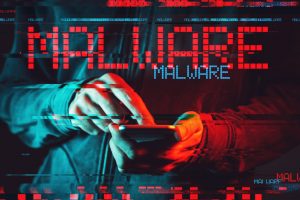August 13, 2019
How’s Your Knowledge on Malware? Here Are Just Some Forms it Comes in

Although cyber security has a broad definition in general, it is often referred specifically to the protection of computer software and electronic data from theft or deliberate corruption or deletion. Hackers have many different methods that they can use to steal and / or destroy data; one of the most common is using malware.
Put simply, the term malware is coined from exactly what it is; “malicious software”. This is software that is created with the intention of causing malice or harm to a device’s integrity; be it related to the hardware, software or data. Malware comes in many different forms that work in different ways:
Virus
The term “virus” is thrown around quite a lot in the land of computers and smartphones. A virus is a form of malware that can spread between multiple computers on a network (similar to how a medical virus can spread between people). As with most forms of malware, they can be designed to modify, steal and delete data from a computer or smartphone. Viruses are often triggered by opening infect computer programs or apps.
Trojan Horse
Being named after the ancient Greek story of similar nature, the term “trojan horse” refers to any form of malware that carries a misleading appearance. Trojan horses are commonly spread through email phishing; when an email containing an infected file poses as coming from a legitimate source with a safe file. Trojan horses commonly create back doors; allowing for personal information and files to be stolen from a device seemingly without any signs.
Keylogger
This form of malware can literally track every single letter, number or character that gets typed into your keyboard. Keyloggers work by hiding themselves onto your machine with no discernable symptoms. They then work in the background to monitor and collect information based on anything that gets typed into your keyboard. Obviously, this can be an extremely dangerous form of malware that is usually only caught or discovered with anti-malware software.
Ransomware
Commonly spread through phishing emails and infected internet websites, ransomware is a particularly hostile and intimidating form of malware. Ransomware works by encrypting your computer data and presenting the user with a screen informing them that their computer has been locked. From there, the hackers usually instruct the user to send them money (commonly in the form of crypto-currency) within a certain time-frame. If the hackers do not decide to delete your data anyway, or send you a bad key, your data is either locked away permanently, or is destroyed. Hackers can also receive the locked or encrypted data on their own end.
Keep Your Devices Protect
While all of these forms of malware can be particularly intimidating and damaging to any consumer or business, there are things you can do to effectively minimize your risk of becoming a victim. The most effective ways to prevent against malware infection are to practice smart web browsing, and use anti-malware software regularly.
Practicing smart web browsing habits alone can almost negate the need for anti-malware software altogether. Some tips for safe browsing include:
- Thinking twice before opening email attachments or emails from suspicious senders
- Looking at the website address (URL) before going in or downloading any files
- Avoiding suspicious / non-certified websites
Protect Your Physical Data as Well!
For the protection of physical data, PROSHRED of Minnesota has the resources and expertise to ensure that both your paper and electronic data is destroyed and secured thoroughly. Our team handles both paper products and hard drives; ensuring that files are completely non-recoverable after destruction.
Talk to us today to learn more about our services!
